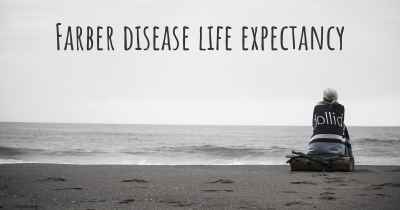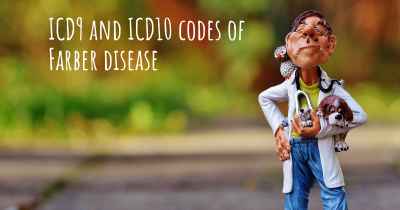Farber disease diet. Is there a diet which improves the quality of life of people with Farber disease?
Are you aware of a diet that can improve the quality of life of people with Farber disease? Is there a diet that is suggested to avoid when having Farber disease? See if there is a diet that can improve the quality of life of people with Farber disease, recommended and to avoid food when having Farber disease

Farber Disease Diet: Improving Quality of Life
Farber disease, also known as Farber's lipogranulomatosis, is a rare genetic disorder characterized by the accumulation of fatty substances called ceramides in various tissues and organs of the body. This accumulation leads to a range of symptoms, including joint deformities, respiratory difficulties, and neurological impairments. While there is currently no cure for Farber disease, adopting a specialized diet can help improve the quality of life for individuals living with this condition.
The Role of Diet in Farber Disease
Although diet alone cannot reverse or halt the progression of Farber disease, it can play a significant role in managing symptoms and supporting overall health. A carefully planned diet can help alleviate some of the complications associated with the disease, enhance nutrient absorption, and promote optimal growth and development.
Key Dietary Considerations
1. Low-Fat Diet: Since Farber disease involves the accumulation of fatty substances, it is crucial to limit dietary fat intake. A low-fat diet can help reduce the burden on the body's ability to metabolize fats and minimize the accumulation of ceramides. Foods high in saturated and trans fats, such as fried foods, processed snacks, and fatty meats, should be avoided. Instead, focus on consuming lean proteins, whole grains, fruits, and vegetables.
2. Essential Fatty Acids: While overall fat intake should be limited, it is important to include sources of essential fatty acids in the diet. Essential fatty acids, such as omega-3 and omega-6 fatty acids, play a crucial role in maintaining brain function, reducing inflammation, and supporting heart health. Good sources of these fatty acids include fatty fish (salmon, mackerel), flaxseeds, chia seeds, and walnuts. Consult with a healthcare professional to determine the appropriate amount and source of essential fatty acids for an individual with Farber disease.
3. Adequate Protein: Protein is essential for growth, repair, and maintenance of body tissues. Including adequate protein in the diet can help support muscle strength and overall health. Choose lean sources of protein such as skinless poultry, fish, legumes, and tofu. If swallowing difficulties are present, alternative protein sources like protein shakes or smoothies may be considered.
4. Nutrient-Dense Foods: Farber disease can impact nutrient absorption and utilization. Therefore, it is important to focus on consuming nutrient-dense foods to ensure adequate intake of vitamins, minerals, and antioxidants. Include a variety of colorful fruits and vegetables, whole grains, nuts, and seeds in the diet to provide a wide range of essential nutrients.
5. Hydration: Staying hydrated is crucial for overall health and can help alleviate some symptoms associated with Farber disease. Encourage regular fluid intake throughout the day, primarily through water and other non-caffeinated beverages. Adequate hydration can support joint mobility, digestion, and overall well-being.
Individualized Approach
It is important to note that the dietary needs of individuals with Farber disease may vary depending on their specific symptoms, age, and overall health. Therefore, it is recommended to work closely with a healthcare professional, such as a registered dietitian, to develop an individualized diet plan that addresses specific needs and goals.
Conclusion
While there is no cure for Farber disease, adopting a well-planned diet can significantly improve the quality of life for individuals living with this condition. A low-fat diet, rich in essential fatty acids, adequate protein, and nutrient-dense foods, can help manage symptoms, support overall health, and optimize growth and development. Remember to consult with a healthcare professional to create an individualized diet plan tailored to the specific needs of the person with Farber disease.








